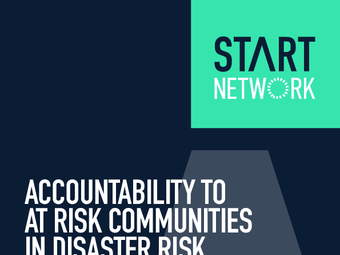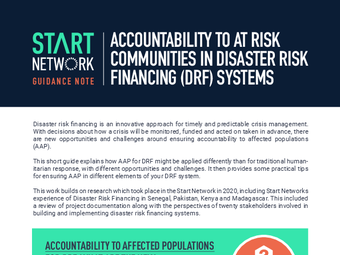Accountability to at risk communities in disaster risk financing (DRF) systems: Fresh opportunities with different challenges
Disaster Risk Financing Systems offer exciting possibilities to scale early action. Tying together a model to predict the likelihood of future crises, with early action plans and prepositioned financing, presents an opportunity for timely action that mitigates the humanitarian impact of disasters. The pre-arranged nature of DRF systems, in which decisions are made in advance of crises, opens the possibility for more accountability to at risk populations.
This paper explores the new opportunities and challenges for ensuring accountability to affected populations (AAP) related to disaster risk financing. It draws on Start Network experience in Pakistan, Senegal, Madagascar and Kenya to discuss possible issues and challenges that DRF programming can present for accountability, and steps which can be taken to address these.
A short guidance note explains how AAP for DRF might be applied differently than for traditional humanitarian response, with different opportunities and challenges. It then provides some practical tips for ensuring AAP in different elements of your DRF system. This work builds on research which took place in the Start Network in 2020, including Start Networks experience of Disaster Risk Financing in Senegal, Pakistan, Kenya and Madagascar. This included a review of project documentation along with the perspectives of twenty stakeholders involved in building and implementing disaster risk financing systems.



